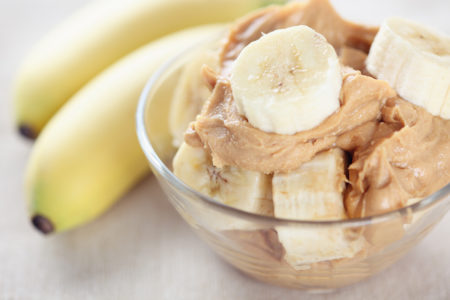All athletes know that feeling; it’s only two hours into the race but the legs are starting to feel heavy, motivation is waning, and the idea of paying to run, bike, or swim for this long suddenly seems ridiculous. That feeling is “bonking,” hitting a wall or running out of steam, and it’s an indicator that the fuel tank is running on empty.
“If you leave the house buck naked, your main source of fuel (glycogen, which is easily metabolized) will last for 90 to 120 minutes at high intensity,” explained Dr. Terry O’Connor, an E.R. physician at St. Luke’s Wood River Medical Center and an ultra-runner and endurance athlete. “If you starve your body past this point, it starts breaking down your own muscle for fuel, essentially cannibalizing yourself.”
At this point, what athletes reach for is entirely personal, and nearly every athlete has a different approach. Eating—even strategic eating—is highly individualized. For Rebecca Rusch, a professional adventure athlete with a lengthy and impressive list of achievements, not the least of which includes being a seven-time world champion in multiple sports, her nutritional strategy has evolved over the span of her 30-year athletic career.
“I’ve gone from knowing nothing. I was doing long distance races and eating anything,” Rusch recalled. “Anything I craved, like Cheetos and Swedish Fish. I just figured I needed to get food in.”
Now, her complete equation for fueling during performance includes a mix of carbohydrates, electrolytes, hydration, and amino acids in the form of foods that are easily digestible. Rusch personally goes for more manufactured packaged foods like GU. And what she eats is just as important as when she eats it.
“A barrier is that people assume that fuel is going to dictate their success,” said O’Connor. “For races, especially endurance, if you are relying on a nutrition plan for success and then during the race you get emotional or egotistical, you can mess up your nutrition plan.”
In other words, a nutrition plan must match behavior. No speeding up unnecessarily to catch the chubby guy ahead.
For sports and races that don’t last more than two hours, fueling during the event is unnecessary. What is important, as with all athletic disciplines, is what is consumed before and especially after training or races.
“We often think progress is about training and how much we do,” said Rick Kapala, who has been the cross-country ski head coach and Program Director for the Sun Valley Ski Education Foundation since 1987 and has worked individually with hundreds of athletes. “The recovery process is equally as important. If you don’t recover your muscles properly, it doesn’t matter how much you train.”
After a workout, there is a 15- to 30-minute window when the body is most receptive to replacing what has been broken down. A good recovery food has a carbohydrate-to-protein ratio of 3 to 1; for example, banana with peanut butter would be a good choice.
“Most people won’t eat until an hour after training,” explained Kapala. “More serious athletes are better organized and can manage the timing of their food consumption. But what they eat is where individual preference comes in. There’s no hard and fast way to
do it.”
There are simple scientific formulas to match fuel to training depending on weight of the athlete and intensity of the exercise. Many professional and serious recreational athletes use those equations, but there is no substitute for the value of experimentation and experience. There is no optimal diet, and there is no silver bullet.
“Everybody wants to feel at their best, professional athlete or not,” offered Rusch. “Nutrition is the easiest thing to do and the hardest to master. But the myth is that it’s complicated—it’s not.”

General Nutritional Strategy for Race Day
Before
Hydrate and top off protein and carbohydrate levels. (Example: peanut-butter with banana and an egg)
During
(Assuming the activity is high intensity and lasting for more than an hour and a half), hydrate and consider foods that provide carbohydrates, amino acids and/or fast sugars and caffeine. These foods should be easily digestible and portable. (Example: energy gels, Shot Bloks or gummy bears, fruit, watered-down Gatorade.)
After
Hydrate again and don’t forget to take advantage of the short recovery window (15 to 30 minutes) to rebuild muscle for the next workout. A good recovery food has a carbohydrate-to-protein ratio of 3 to 1. (Example: fruit smoothie, with dairy or dairy substitute and a protein powder, whatever looks good. Anything is better than nothing.)
Then, have a beer.


